How common is neck pain in the US?
According to the American Osteopathic Association, over a fourth of Americans report chronic neck pain. It is the number three reason for chronic pain, and over 2/3 of individuals get neck pain at some point in life.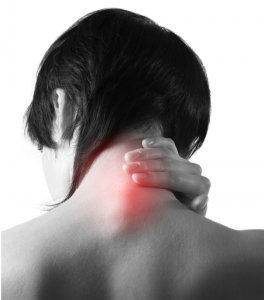 Over 3 million whiplash injuries occur in America every year, with 15% ending up with chronic neck pain.
Over 3 million whiplash injuries occur in America every year, with 15% ending up with chronic neck pain.
What are the most common causes of Neck Pain?
The most common reasons for neck pain to occur include Muscle Strains, Degenerative Arthritis, Cervical Spinal Stenosis, Herniated Disc, Degenerative Disc Disease, Whiplash or less commonly tumor or infection.
Muscle Strains – this may entail a person sleeping wrong and ending up with a neck strain, or having an issue with overuse at work or a sporting injury. These are often self-limiting injuries, but treatment can help lessen the time it takes to reach a pain-free state.
Degenerative Arthritis – tens of millions of Americans are affected by neck arthritis with aging. Usually it is just part and parcel of aging, however, if an individual has neck trauma at a younger age post-traumatic arthritis may result.
This may include whiplash for example. While rheumatoid arthritis may also cause 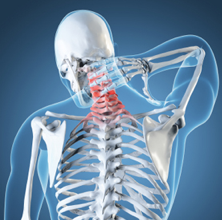 considerable neck pain, “wear and tear” osteoarthritis is the most predominant reason people have daily neck pain on a chronic basis. This involves cartilage degeneration in the smaller facet joints, that are on both sides of the neck at each level.
considerable neck pain, “wear and tear” osteoarthritis is the most predominant reason people have daily neck pain on a chronic basis. This involves cartilage degeneration in the smaller facet joints, that are on both sides of the neck at each level.
Cervical Spinal Stenosis – Cervical spinal stenosis refers to a problem that occurs secondary to degenerative arthritis in the neck. The arthritis causes overgrowth of soft tissues and bone of the neck, which pinches on nerve roots as they try to exit the spine.
So there may not be considerable neck pain if the arthritis is not painful. A person may only be having arm pain due to the nerve root compression. The usual scenario is that a person has both neck pain and arm pain due to the arthritis plus the pinched nerve root(s).
Degenerative Disc Disease – As with low back pain due to degenerative disc disease, neck pain may also be caused by degenerative disease. This usually occurs in younger individuals, and may lead to chronic neck pain.
Surgery for degenerative disc disease of the neck does not have a great track record, so nonoperative treatment typically works well. Interestingly, the degenerative disease often leads to abnormal neck motion and arthritis of the joints in the back of the spine (facet joints), which also responds well to conservative treatments.
Herniated Disc – If a disc experiences a tear in the neck and some of the inner part squeezes out, a pinched nerve can result with pain going down the arm on the affected side.
The pain travels along the nerve’s sensation, and may be associated with considerable neck pain due to the tear in the intervertebral disc. Or it may be a situation where there is no neck pain at all, just arm pain (and maybe muscle weakness).
Whiplash – Over 3 million individuals in the US suffer whiplash injuries every year. These occur predominantly from auto accidents. The result is considerable neck pain involving damage to neck ligaments, facet joints and muscle spasms.
Unfortunately, over 15% of whiplash pain turns into chronic neck pain. If treatment is received soon after the injury, the acute pain may be mitigated, and chronic pain averted.
Tumor/Infection – these are unusual causes of neck pain, but are seen from time to time. In those individuals experiencing fevers, chills, night sweats, pain at rest, then a workup will entail imaging studies, blood work and a biopsy.
Neck Fracture – after a traumatic incident with neck pain resulting afterwards, it is important to rule out a fracture. This may be seen with x-rays, or a CT scan may be necessary. Treatment for a fracture is outside the realm of this discussion.
Call (602) 507 – 6550 to schedule your Appointment TODAY!

How is the cause of neck pain diagnosed?
There is a lot physicians obtain from an excellent patient history and physical examination. Along with being able to narrow down the possibilities for the cause of the neck pain, a doctor will then order appropriate imaging studies. This may include plain x-rays, flexion/extension views and possibly an MRI or CT Scan.
Interestingly, there are times when the neck causes shoulder pain, headaches or pain in the shoulder blades. This may masquerade as pain coming from elsewhere, but the neck should be considered. For instance, cervical stenosis may pinch on nerves and cause shoulder pain. Or arthritis in the upper facet joints may lead to headaches. If an individual is having pain in the left jawbone along with the left shoulder, it may not be coming from the neck or shoulder at all – but could be a heart problem. These need to be kept in mind.
If a tumor of infection is suspected, bloodwork will be obtained as well.
What treatments are available for alleviating neck pain?
For the treatment of acute neck pain that is not due to a tumor or infection, treatment usually starts with over the counter anti-inflammatories and Tylenol. This also may include ice/heat and other modalities.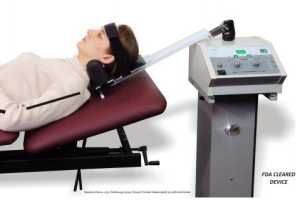
For individuals with painful muscle strains or whiplash, additional medications may include short term narcotics and muscle relaxers such as Flexeril or Valium.
Physical therapy and rehab includes stretching, strengthening, ultrasound, electrical stimulation, ice/heat and massage. A TENS unit can offer significant pain relief as well. Along with the medication options, pain may be substantially relieved. Chiropractic manipulations may decompress pinched nerves and relieve arthritis pain, along with cervical spinal decompression therapy. Acupuncture has also been shown to help a lot with cervical arthritis pain, spasms and muscle strains.
Injection treatments may include trigger point injections, medial branch blocks, facet joint injections, or epidural injections. Additional treatment may include radiofrequency ablation, which may provide six to eighteen months of consistent pain relief.
When is surgery necessary for neck pain?
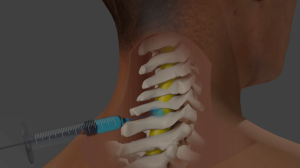
Cervical Epidural Injection
When a person has neck pain only (no arm pain) and there is no fracture, instability infection, or tumor, then surgery is not a good idea. The pain relief achieved does not substantiate the risks of the surgery.
It is better to treat that pain nonoperatively. When a person has a pinched nerve from a disc herniation or spinal stenosis, then treatment should initially consist of nonsurgical options. If over 6 to 12 weeks is tried and fails, then surgery may be considered. Those surgery options are for an anterior cervical decompression and fusion (ACDF), an artificial disc replacement, or a decompression option for stenosis.
Additionally, if a person develops muscle weakness from the pinched nerve, consideration should be given to performing surgery sooner than otherwise. This decision should be made in conjunction with a spine surgeon. For infection, tumor or fracture, the same goes.
How well does surgery work for neck pain?
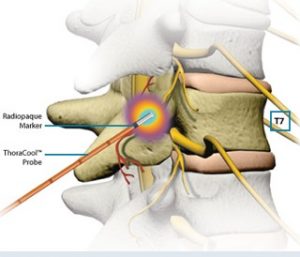
Radiofrequency ablation of the neck deadens nerve endings and relieves neck pain for 6 to 18 months.
Surgery works well for the arm pain/numbness/weakness due to a pinched nerve. It does not, however, work great for simply neck pain due to arthritis or degenerative disc disease.
That is best treated conservatively with pain management options.
As mentioned, for infections, tumors, fractures and instability, then it is best to seek treatment from a spine surgeon.
For acute or chronic neck pain, Arizona Pain Specialists offers comprehensive nonsurgical treatment. This includes medication management, injections, radiofrequency ablation, chiropractic treatment, physical rehabilitation, TENS units, massage, acupuncture and cervical decompression therapy.
Call (602) 507 – 6550 to schedule your Appointment TODAY!

![]()



 Over 3 million whiplash injuries occur in America every year, with 15% ending up with chronic neck pain.
Over 3 million whiplash injuries occur in America every year, with 15% ending up with chronic neck pain. considerable neck pain, “wear and tear” osteoarthritis is the most predominant reason people have daily neck pain on a chronic basis. This involves cartilage degeneration in the smaller facet joints, that are on both sides of the neck at each level.
considerable neck pain, “wear and tear” osteoarthritis is the most predominant reason people have daily neck pain on a chronic basis. This involves cartilage degeneration in the smaller facet joints, that are on both sides of the neck at each level.

